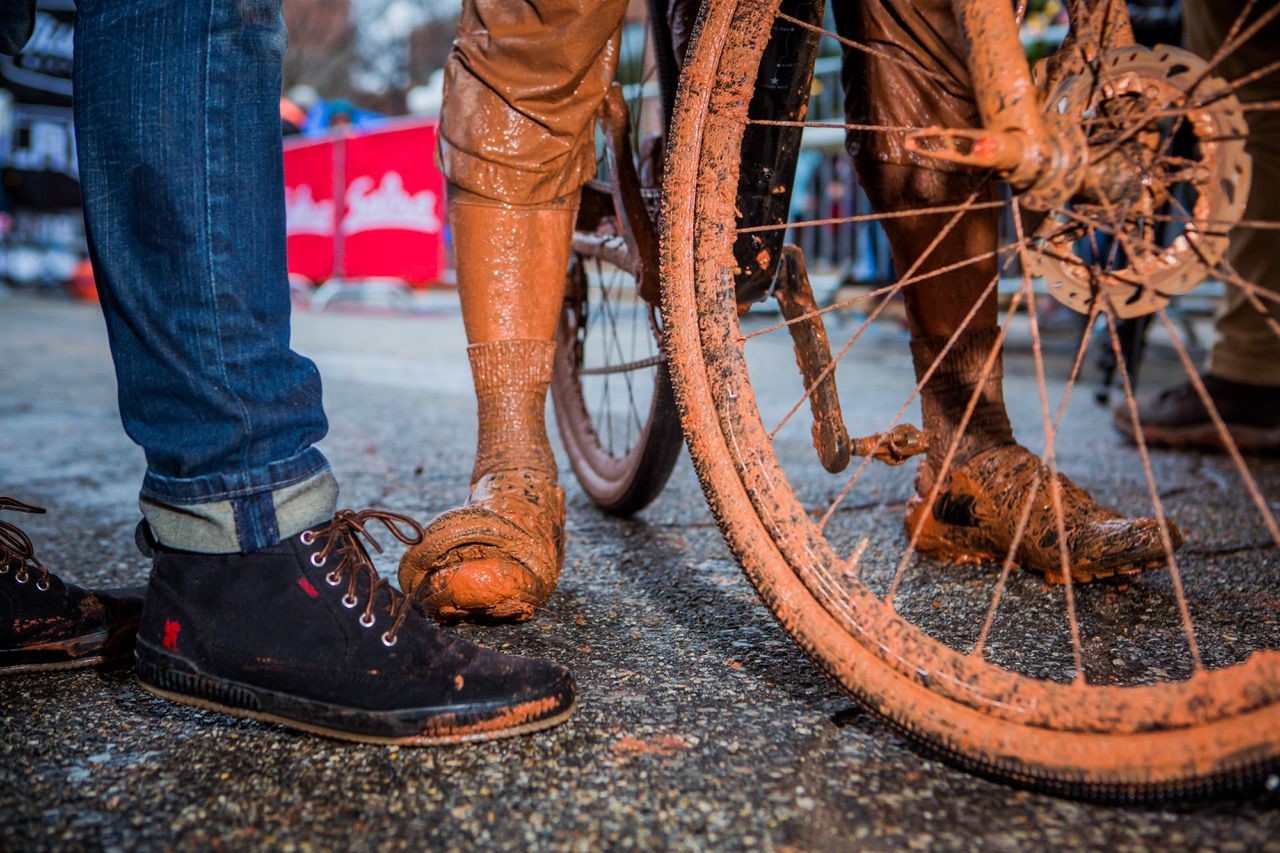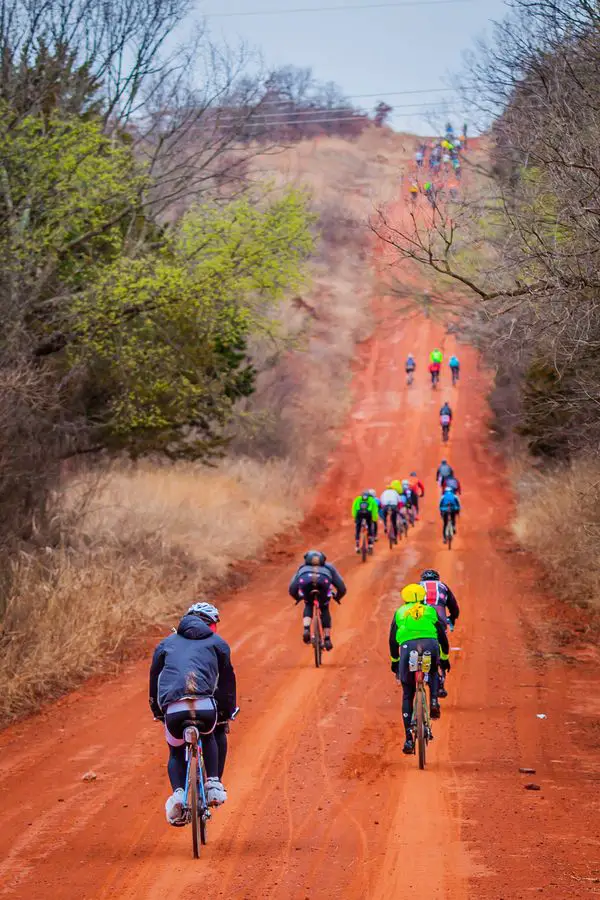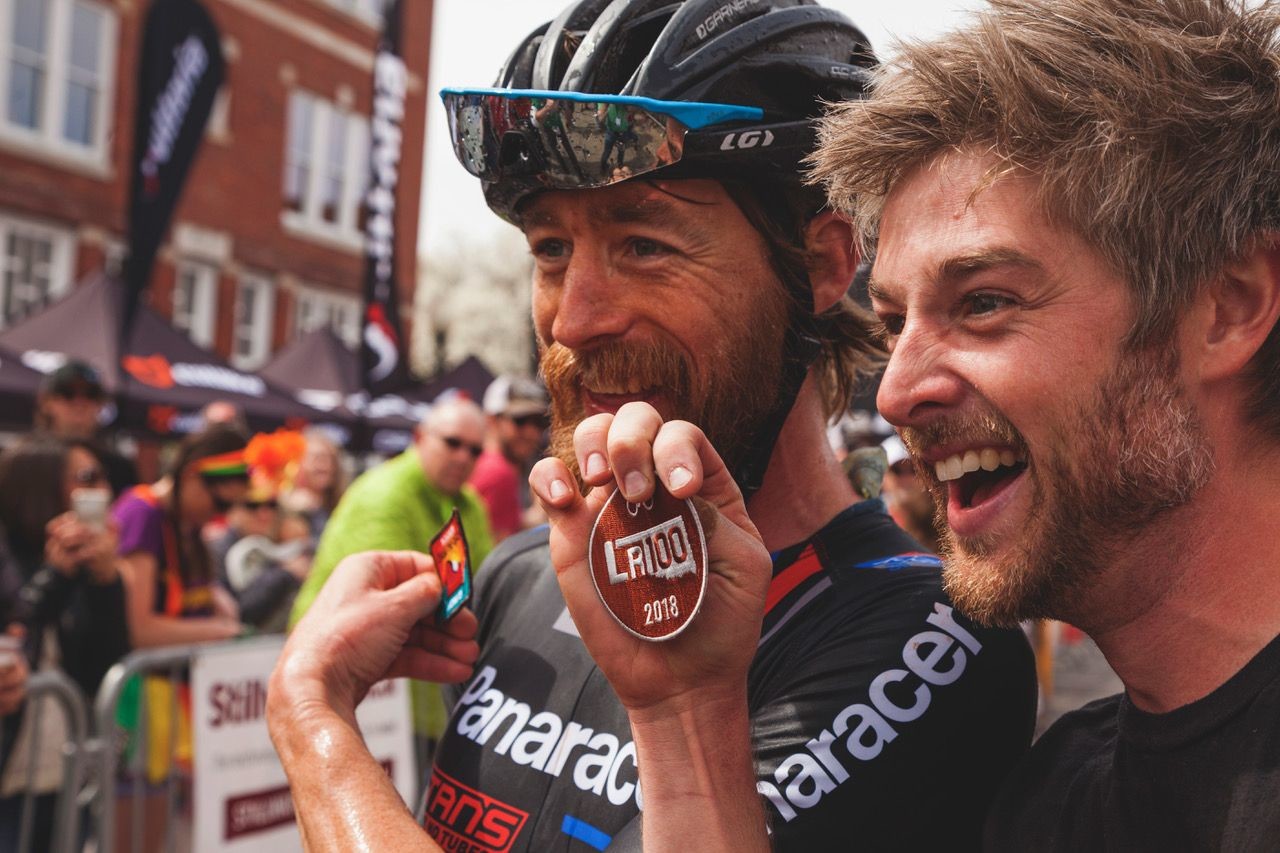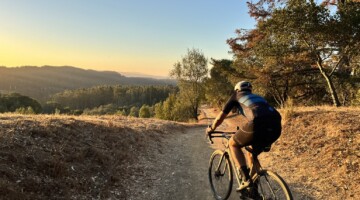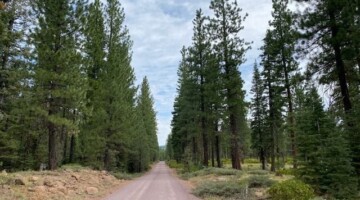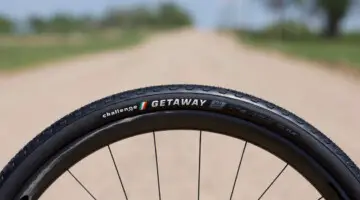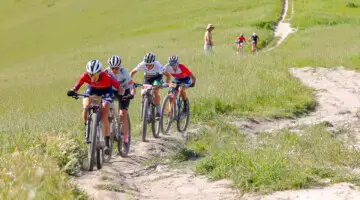Although gravel races are largely unsanctioned and spread across the country, some events stand above others as elite-level events.
One of those races is this weekend’s Land Run 100 held on the iconic red dirt roads outside Stillwater, Oklahoma.
First held in 2013, the Land Run 100 has grown from an event with 121 starters to one that sold out 1,000 100-mile spots in just seven minutes for the 2019 race.
Why is the Land Run so popular? Maybe it is those images of the red roads turned to a peanut butter mess. Maybe it is the 38-percent finish rate the first five years the event was held.
“I’d be a liar if I said bad conditions four out of the last six years—with rain the night before or during the race that has made some of the roads impassable—didn’t kind of put us on the map for difficulty,” race director Bobby Wintle said. “I think that has been a big part of why it’s grown, people coming to see if they can do this thing so early in the season.”
That is part of it, but there is, of course, much more to the story of one of the most successful gravel races in the U.S. And with that success, the team behind the race has had to deal with questions about maintaining its grassroots while growing in a way that meets the changing landscape of gravel in the U.S.
A Red Gravel Challenge
The difficult conditions that have come to define Land Run are thanks to the race’s unique geologic setting. Stillwater is located on the Red Bed Plains, which get their name in large part to the iron-rich soil.
The Land Run race started with the humble goal of sharing the dirt roads cut into the red soil.
“We’re absolutely dedicated to not letting popularity, growth or money or anything at all to change why we started to do this in the first place,” Wintle said. “And that’s because we felt like these roads were worth inviting a whole bunch of friends to come ride for a hundred something miles.”
Although the race falls under the category of “gravel,” Wintle has half-jokingly considered creating a new category of bike racing for the event.
“The roads are like cut into the earth, they’re not prepared gravel roads. When I say these are B roads anywhere else, or even C roads if those exist, that’s totally true,” Wintle said. “They put gravel on them, but after two roads, the dirt just eats the rocks.”
“I’ve been telling everyone on our team, I kind of want to call it a dirt road race. Every year people say, dude, where’s the gravel?”
Even though the Land Run did not necessarily start as a challenge-style gravel race, it has completed embraced how difficult the annual March ride—and at times, walk—can be.
On the race website, the organizers proudly tout a 54.5-percent finishing rate for the 2,350 riders who have started the 100-mile race since 2013. Take out last year, affectionately known as the “Fast AF Year” thanks to the dry conditions, and the finishing rate drops to 38 percent.
Prior to the 2018 Fast AF Year, the Land Run 100 had three years of wet, muddy conditions that really helped put the race on the map. Event Manager Sally Turner described the first year she put on a number plate and headed out onto the plains.
“I raced in 2016. It had rained the day before and the night of the race. It poured,” she said. “It was not raining in the morning, and when we set out, it was 50 degrees and cloudy. We were wearing arm warmers and stuff. About 30 miles in, I get over a hill and everyone is walking. It was like, ah shoot, alright, here we go.”
“It was like walking through peanut butter or pudding. It was so sticky,” she continued. “It sticks to your shoes and it seeps into your socks. If you ride through it, it splashes up onto your face. I was covered in it. And it’s so red because we have so much iron and clay out here. I got to the finish line and someone thought I had blood on my legs because it was so red.”
The Dirty Kanza 200, another Great Plains gravel race, is famous for requiring riders bring a support crew should they get marooned on the Kansas gravel roads. With DNFs baked into the DNA of the Land Run 100, the organizers have a different approach for taking care of riders bogged down in the red mud.
“We partner with a local Jeep club, the Red Dirt Jeep,” Turner said. “They’re the ones who go rock-hopping with their Jeeps. They’re tricked out with huge tires and crazy suspension and all that stuff.”
With the course covering 103 miles of red-dirt roads, the logistics of getting the Jeeps to where they need to be is obviously challenging. The race organizers fly an employee of Ride with GPS to Stillwater and have him post up in the “command center,” where he helps track the Jeeps and dispatch them to stranded riders.
The fleet of Jeeps came in handy in 2017. Temperatures that were supposed to hit the 40s never materialized, and instead, riders had to plow through the mud with a mist in the air and temperatures maxing out in the mid-30s.
“[The year] 2017 was atrocious. One Jeep picked up 93 people off the course,” Wintle said. “The Jeeps were on full-on emergency notice. I think even Kuat took its van out to a gas station and made up an impromptu drop station. We were just trying to get people off as fast as possible.
“If you watch that Land Run video that Salsa Cycles made from that year, there’s a shot of someone just absolutely trembling. I think we had like 100 cases of near hypothermia at the ER. We had just a handful of people who finished.”
For the 1,800 riders heading to Oklahoma right now, although it rained early in the week, temperatures are forecasted to be in the 50s and high weeks have accompanied a mid-week warm up. Matching the Fast AF Year might be a challenge, but it should still be pretty fast this year.
Booming Growth
The Land Run event’s growth has been nothing short of meteoric. The race now boasts a 100-mile race, 50-mile race, 50-mile run and a 50-mile run / 50-mile ride two-day double. The 121 riders from the first year have grown to over 1,800 participants.
Turner’s presence on the race team is an indicator of how successful Land Run has become. The race was started by Stillwater’s District Bicycles, co-owned by Bobby and Crystal Wintle. With their dual duties of running the shop and a national-level event spreading them then, the Wintles hired Turner to serve as Event Manager.
Turner volunteered at the first three events before grabbing her steel All-City Macho Man (original edition, thank you very much) and plowing through the red mud in 2016.
“Since it started, I’ve kind of been dogging Bobby to let me help organize it more so he’s not running around like a crazy person all the time,” Turner said. “Land Run is put out through District Bicycles, so it got to a point where Bobby couldn’t make Land Run happen at the same time he is running the shop. I feel like it’s almost a match made in heaven.”
In theory, gravel is more egalitarian than some disciplines in cycling—women and men start at the same time and race the same distance and typically have equal prizes, whatever they might be—but most events are still run by men and there is a large gap in participation between the sexes.
Turner is one of the few women in the U.S. working in an event management position. Turner spoke a bit about the experience.
“Occasionally we get someone who wants to run something by Bobby as well. It’s like, whatever. If I let myself get offended by it, I’m not going to be able to do as good a job as I should. It’s about breaking down barriers and showing that I do have a certain level of authority and knowledge, and I’m not just a secretary or something.”
The background Turner brings to the Land Run team—starting as a volunteer, participating as a rider, living in the community—is symbolic of the team’s goal for the race, even if it has grown in participation numbers and attention.
“We do this in a way that’s celebratory,” Wintle said. “We don’t focus on just the competition or just the race or run it like a fundraising effort. We want this to be an event, not just a bike race. We want it to be an experience, basically a family reunion for all of us to be able to get together, celebrate and push each other to do crazy stuff. To see a place in the country people maybe haven’t seen before.”
All of the Land Run events start and finish in downtown Stillwater on West 7th Street at District Bicycles. The finish line has a bit more of a production than your average gravel race, but like any good gravel event, once the riding stops, the party keeps going.
Highlighting the organizers’ goals for their race, there was a specific rider Wintle really focused on: DFL.
“I’m not interested in just the story of just the fastest person,” Wintle said. “We’re interested in everyone doing the event.”
“We leave the finish line open until the last person finishes. We have communication with the Jeep Club, so we know where they’re at. The finish for the DFL person is as exciting as it is for the first finishers. We’ve gotten longhorns, Industry Nine has sent hubs as a sponsor. Banjo Brothers is actually who gave me the idea for the DFL. Year number two they sent us backpack, and that’s where it started back in 2014.”
Don’t Be Lame
The Land Run 100 started as a few folks sharing their red-dirt roads with 121 friends, but it is now one of the top gravel races in the country. As the event has grown in popularity with your average gravel rider, it has also become a must-do for the top gravel Elites in the U.S.
Even with the most stacked start list in event history, there is no preferential treatment just because you have won the Dirty Kanza 200 or something like that.
“Ted King emailed us,” Turner said about arguably the biggest star in U.S. gravel.
“Ted King was gone and was like, I want to be a part of this. And we made it happen,” Wintle elaborated. “I met Amanda Nauman through work I did at the DK training camp the last few years. Amanda was like, I want to be there.”
As the Land Run team carefully controlled the growth of the event—registrations grew by an average of 40 percent from 2014 to 2017 for the Land Run 100 and the race cap now stands at 1,000 riders—they made a hard and fast decision that has guided its growth.
“It’s our party, and if people want to be part of the story we’re trying to tell, whether it be as a sponsor or participant, the priority is whomever our customer is, the person out on the ride or run, they’re the one we’re thinking about the most,” Wintle said.
Events like Land Run are among those that are likely to be at the forefront of the changing landscape of U.S. gravel. We have already seen Dirty Kanza 200 wins fundamentally changing riders’ careers and a WorldTour team is targeting the event this year. Similar changes for the next level of gravel events are seemingly on the way.
Like many gravel races, the Land Run 100’s rulebook is terse, with just two rules. Number one, don’t be lame. Number two, no support crews allowed.
The Land Run team is 100-percent happy letting those rules stand, even as the prestige of a Land Run win continues to grow. I asked Turner and Wintle about the Don’t Be Lame rule.
“If you have any reservation in your heart or soul or brain that what you’re doing might be lame or cheating, it probably is. Don’t do it. I think that’s how I interpret it,” Wintle said.
Turner was terse, like the rule itself. “Don’t be a dick. You can quote me on that. ”
All joking aside, Wintle and his team think a lot about where the Land Run 100 is going. The TL;DR is the Don’t Be Lame rule is likely to be around for a long time.
“I’ve been toiling in my mind for the last six months about what is going to happen next,” Wintle said. “What is going on with this entire scene. Professionals are starting to take notice. They want to be a part of it. They want to have fun, but they want the playing field to be whatever it needs to be.”
“I’m not stepping in and saying, I’m creating this as a platform for professionals. They’re saying they’re interested in what we’re doing. If they’re interested, we’re not going to change the game just because they’re showing up.”
The 2019 Land Run 100 starts at 8 a.m. CDT in Stillwater.













